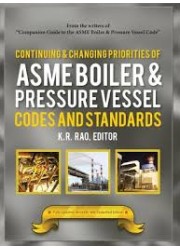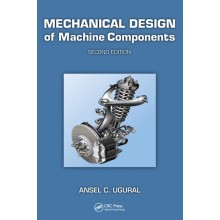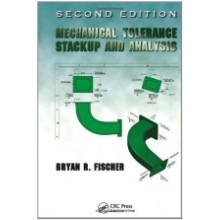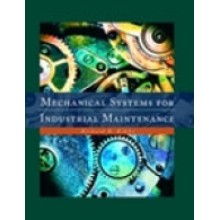Continuing & Changing Priorities of ASME Boiler & Pressure Vessel Codes and Standards
Quantity:
-
Add to Compare
This comprehensive work written by ASME Codes & Standards experts was originally published as part of Volume 3 of the Companion Guide to the ASME Boiler & Pressure Vessel Code. This fully updated and expanded volume is now a stand-alone publication that addresses Continuing and Changing Priorities for the success of current and next generation Nuclear Reactors and Internals, License Renewal, Public Safety, PRA and Spent Fuel Pool-related issues.
This book has four parts, the first dealing with continuing priorities of ASME Boiler and Pressure Vessel Codes and Standards and the remaining three parts dealing with changing priorities of the Code.
The first part has 14 chapters written by 16 distinguished code authorities with updated information pertaining to continuing priorities. Distinctive in this part is the inclusion of new contributors who have added unique perspectives to the material that was first published in the third edition of the Companion Guide. Likewise the authors who previously updated the material in the third edition have contributed additional information. A new chapter on “seismic protection for pressure piping systems” reflects the importance of the topic especially in regard to aging nuclear reactors.
Three distinctive parts of the book address changing priorities of ASME B&PV Codes and Standards. These are: “Changing Priorities;” “Lessons Learned;” and “Future Discussions.”In Part 2, “Changing Priorities,” there are nine chapters by 11 contributors who are not only Code experts but also recognized authorities in the topics covered by them. Part 3, “Perspectives of Lessons Learned,” has eight chapters by 11 authoritative contributors who are also distinguished in the topics addressed by them. In light of the aging nuclear reactors in operation in the U.S. and around the world and the need for new reactors, it is appropriate to synthesize the expert experiences relating to selected topics. Part 4, “Future Discussions,” is the culmination of the current thinking process for the use of nuclear energy for power generation. This part has two chapters written by five authors with recognized expertise in the subject matter.
A unique feature of this publication is the inclusion of all author biographies and an introduction that synthesizes every chapter, along with an alphabetical listing of indexed terms.
Dedication
Acknowledgements
Contributor Biographies
Preface
Introduction
Chapter 1 : History of The Code Rules for Accreditation, Certification, and Related Issues
Chapter 2 : The Maintenance Rule
Chapter 3 : Pipe Vibration Testing and Analysis
Chapter 4 : Stress Intensification Factors, Stress Indices, and Flexibility Factors
Chapter 5 : Code Design and Evaluation for Cyclic Loading–Sections III and VIII
Chapter 6 : Perspective on Cyclic, Impact, and Impulse Loads
Chapter 7 : Operability and Functionality Qualification
Chapter 8 : Fluids
Chapter 9 : Bolted-Flange Joints and Connections
Chapter 10 : The Evolution of U.S. Transportation Regulations for Radioactive Materials - An Updated Retrospective
Chapter 11 : Pipeline Integrity and Security
Chapter 12 : Decommissioning Technology Development
Chapter 13 : On-Site Storage, Transport, Consolidated Interim Storage, and Disposal of Used Nuclear Fuel
Chapter 14 : Seismic Protection for Pressure Piping Systems
Chapter 15 : Generation III PWRS
Chapter 16 : New Generation of BWRS
Chapter 17 : Future Code Needs for Very High Temperature Generation IV Reactors
Chapter 18 : License Renewal and Aging Management
Chapter 19 : BWR Reactor Internals and Other Bwr Issues
Chapter 20 : PWR Reactor Vessel Integrity and Internals Aging Management
Chapter 21 : PWR Reactor Vessel Alloy 600 Issues
Chapter 22 : PRA and Risk-Informed Analysis
Chapter 23 : Standardization of Valves, Flanges, Fittings and Gaskets (ASME B16 Standard)
Chapter 24
Part A : Lessons Learned Based on Section VIII, Division 1
Part B : Lessons Learned Based on Section VIII, Division 2
Chapter 25 : Lessons Learned Based on Operating Experience, Section XI
Chapter 26
Part A : Lessons Learned : Industry Experience of Materials
Part B : Lessons Learned : Experience With Nonmetallic Materials in Structural/ Pressure Boundary Applications
Chapter 27 : ASME Section XI Developments in Evaluation Procedures for Nuclear Piping Degraded by Flaws and Corrosion Processes in Response to Lessons Learned
Chapter 28 : Lessons Learned in The Use of Pressure Relief Devices
Chapter 29 : Insights From Nuclear Utility Experience With Pra Applications
Chapter 30 : Lessons Learned: NRC Experience
Chapter 31 : Power and Process Piping Lessons Learned
Chapter 32
Part A : A Scalable Approach to Commercial Nuclear Power : Nuscale Power’s New Approach to Safety and Deployment of Nuclear Plants
Part B : New Deliberations in Nuclear Modular Construction—Westinghouse Small Modular Reactor
Chapter 33 : New Deliberations-Fusion Reactors
Part A : Theoretical Bases and Scientific Foundations
Part B : ITER
Part C : Nuclear Fusion
Index
Write a review
Your Name:Your Review: Note: HTML is not translated!
Rating: Bad Good
Enter the code in the box below:
Copyright © 2014 Engineering Standards Bureau. All Rights Reserved.
Developed By Zoom Into Web






